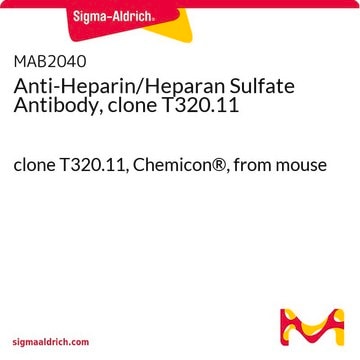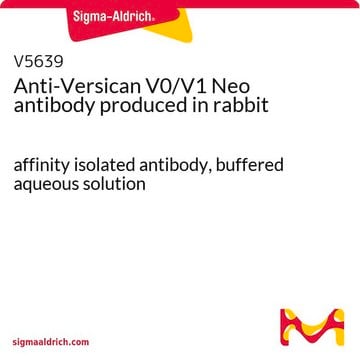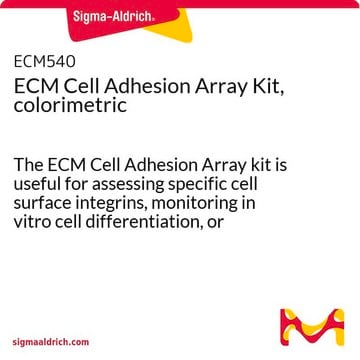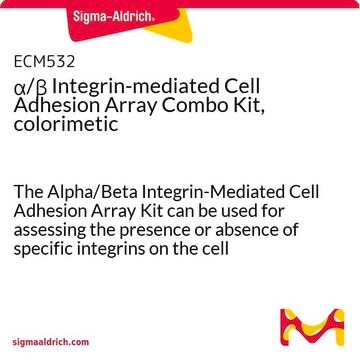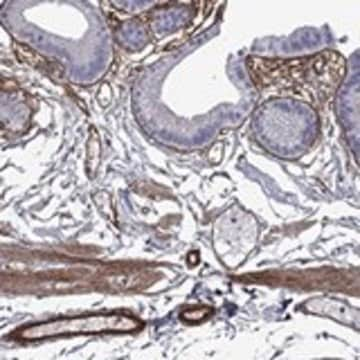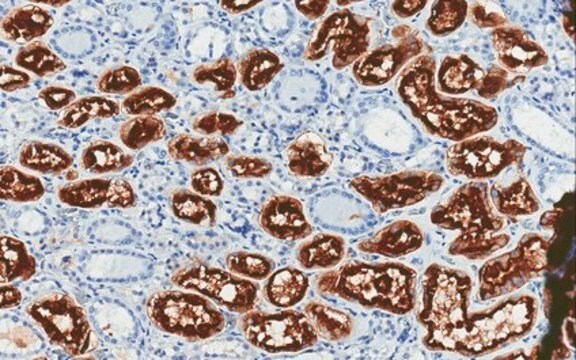MABT12
Anti-Heparan Sulfate Proteoglycan (Perlecan) Antibody, clone 5D7-2E4
clone 5D7-2E4, from mouse
Sinônimo(s):
heparan sulfate proteoglycan 2 (domain V region), perlecan proteoglycan, basement membrane-specific heparan sulfate proteoglycan core protein, HSPG, PLC
About This Item
Produtos recomendados
fonte biológica
mouse
Nível de qualidade
forma do anticorpo
purified immunoglobulin
tipo de produto de anticorpo
primary antibodies
clone
5D7-2E4, monoclonal
reatividade de espécies
human
técnica(s)
immunocytochemistry: suitable
immunohistochemistry: suitable
western blot: suitable
Isotipo
IgG1κ
nº de adesão NCBI
nº de adesão UniProt
Condições de expedição
wet ice
modificação pós-traducional do alvo
unmodified
Informações sobre genes
human ... HSPG2(3339)
Descrição geral
Imunogênio
Aplicação
Western Blot Analysis: A previous lot was used by an independent laboratory on a 3-8% Tris-acetate gel in which the band appears above the 460 kDa marker. (courtesy of Whitelock, J. Graduate School of Biomedical Engineering, University of New South Wales, Sydney, Australia)
Cell Structure
ECM Proteins
Qualidade
Immunohistochemistry Analysis: 1:300 dilution of the antibody detected Perlecan in fresh-frozen normal human tonsil tissue.
Descrição-alvo
forma física
Armazenamento e estabilidade
Nota de análise
Fresh-frozen normal human tonsil tissue
Outras notas
Exoneração de responsabilidade
Not finding the right product?
Try our Ferramenta de seleção de produtos.
Código de classe de armazenamento
12 - Non Combustible Liquids
Classe de risco de água (WGK)
WGK 1
Ponto de fulgor (°F)
Not applicable
Ponto de fulgor (°C)
Not applicable
Certificados de análise (COA)
Busque Certificados de análise (COA) digitando o Número do Lote do produto. Os números de lote e remessa podem ser encontrados no rótulo de um produto após a palavra “Lot” ou “Batch”.
Já possui este produto?
Encontre a documentação dos produtos que você adquiriu recentemente na biblioteca de documentos.
Nossa equipe de cientistas tem experiência em todas as áreas de pesquisa, incluindo Life Sciences, ciência de materiais, síntese química, cromatografia, química analítica e muitas outras.
Entre em contato com a assistência técnica
